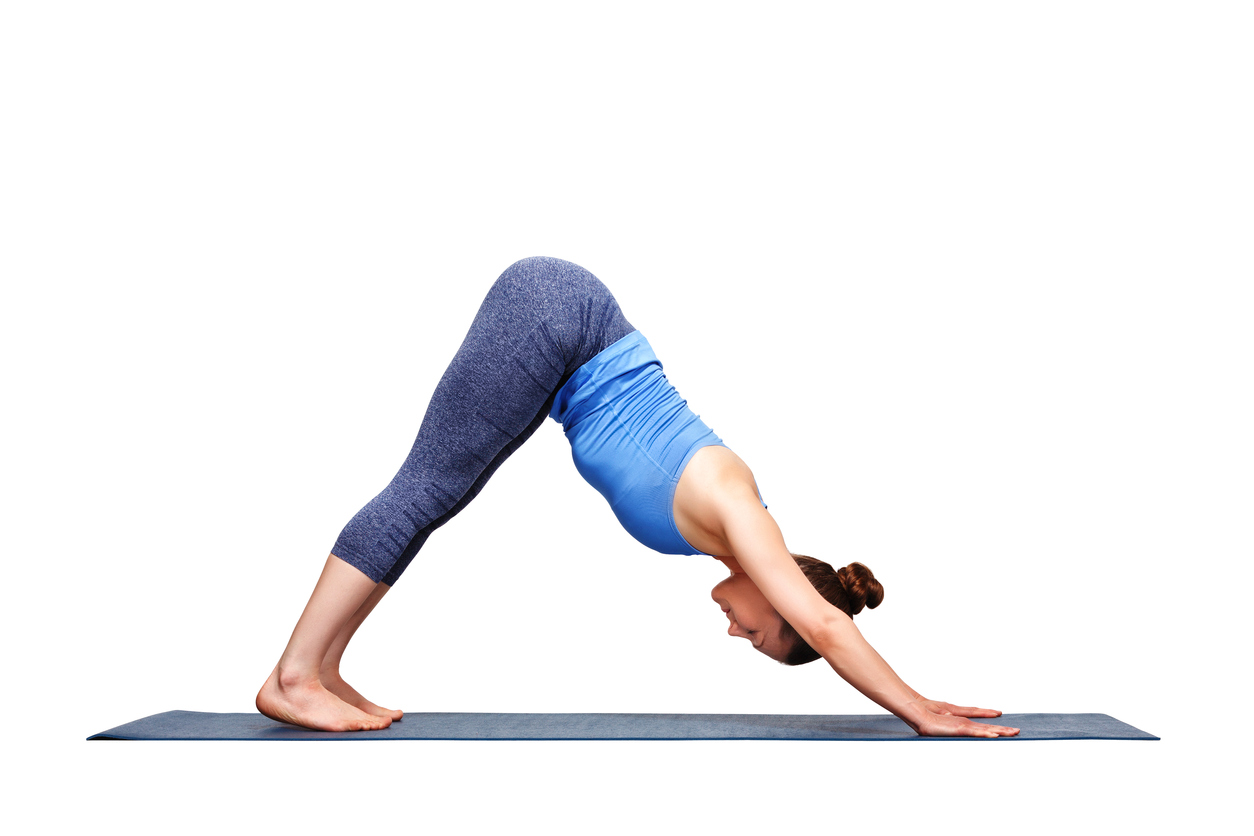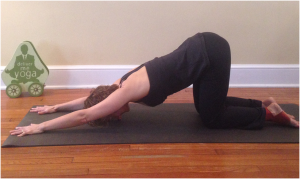
dogs of every kind
I think it was about 4th grade when I met Old Dan and Little Ann. Little did I know these two coon dogs as there were called would be the cause of so many tears. I’m not sure how Where the Red Fern Grows ended up in my book pile but the story of Billy and these two small raccoon-hunting dogs changed my life.
I did not have a real dog, but through this story I got it. I felt it. These three creatures had a sense of each other that was beyond works. I’d forgotten about this story until I was sitting to write about downward dog. If you have a dog, you’ve seen it.
I subscribe to the theory that the origins of downward dog evolved from the ancient yogis. They, like us, spent a lot of time sitting. They also, like us, probably had wandering minds and had their share of distractions. They, like us eventually gave in to boredom or biology and had to get up.
Animals have the pleasure of no mind. They move their bodies by instinct in response to what is around them and what they need. Rest, run, hunt, eat and stretch. The theory is that the sitting yogis got up and began to mimic the stretches of the animals around them.
The upside down v shape of downward dog looks easy. It is a simple shape that engages fingertips to toes and boasts of many benefits. Yet, after many years of practice and remembering Old Dan and Little Ann it dawned on me why this pose is so much more.
At first practicing downward dog is a stretch to lengthen arms and legs. It’s often a challenge, yet feels good. Holding a couple of breaths is fine and eventually, either your hamstrings soften and you get your heals to the floor. or you get over caring that they are not and enjoy the calf stretch.
Over time much more is revealed. It’s not only about a stretch similar to how the story was not only about a boy and his two dogs. Something happens, with hands and feet pressing into the earth, hips reaching toward the sky. The world gets turned upside down. It’s as if you were a snow globe lovingly being picked up and shaken, the glitter snow swirling about.
It’s a reawakening of the senses, shifting from the mundane repetitive movement of everyday life to this new shape of awareness. Many days, and many practices I failed to notice this stream of life wanting to bubble up from inside. What if it was too much? Its a risk to feel good. To feel is to love and to love mans the feeling of being fully connected and really, really in my body. The numbness fades and it feels like my senses, the sensations of my body that are radically independent of words, come flowing back to life.
It’s about coming back to my senses. It’s about tapping into that feeling of my own body, awake and alive. Downward dog is a pose of feather-light streams of engagement and surrender, of acceptance and awareness.
Animals have the pleasure of no mind. They move their bodies by instinct in response to what is around them and what they need. Rest, run, hunt, eat and stretch. The sitting yogis began to mimick the stretches of the animals around them.
Muscles get stretched and strengthened but the current beneath this pose is about sensing. In some yoga classes it may be called a “rest” pose to come back to in a vinyasa flow sequence. But wait a minute. If you’re new to yoga or you have tight hamstrings, cranky shoulders or a past injury you’ll want to take care with downward dog to make sure it is working for you and not causing any further complications.
So what to do? Abandon downward dog completely? Well…you know I’m never about fear creating unnecessary limitations. There are some awesome alternatives to work toward downward dog that have similar benefits and will get help you work your way up to the downward dog of your dreams in a safe way. Think of these as training similar to they way a swimmer lifts weights and runs to enhance her swimming abilities.
Ahh..and now we arrive at two of yoga’s most important teachings. These have nothing to do with downward dog in particular. The first lesson is the be here now one. I have more that once misinterpreted this to be” pretend you are more advanced that you are and go for it.” The soggy pop that can from my hamstring and the subsequent year-long recovery really let an exclamation mark at the end of this lessson for me.
Being here now requires having your mind on the reality of your body in this moment. Not where things were yesterday. Or where you might like them to be. But seeing feeling the truest reality of your body and then moving into a pose, any pose, with that awareness.
It’s the ability to see clearly where things are right now. Where YOU are right now, in this present moment so you can know what is the best next action to take–in your practice and in life.
It was 6 am on a cold morning when I did the side plank and went for the toe hold that fateful day that changed the future of my hamstring forever. If it had been an early evening practice on a warm summer day, things would have been very different. I can’t remember exactly where my mind was, I think I was flying out to Austin to attend SXSW later that day and my head was already there.
Also, at that time in my life, it was an ego issue. I was a yoga teacher. I told myself I was supposed to have an impressive yoga practice and to keep pushing to go further. There was nothing impressive about hobbling around SXSW for the next 4 days or a very modified practice for the next 6 months. I often have to learn things the hard way.
The second offering of yoga when it comes to the variations of downward dog is the non-attachment lesson. Today I might do an awesome downward dog, then I need to let it go. Tomorrow, maybe my body is tired so what if I opted for puppy pose every time the class went into downward dog or even child’s pose. Could I tolerate the shame of my critic voice calling these “lesser” poses? I certainly learned some humility as I had to do this after the hamstring injury. There was no choice.
Non-attachment means letting go of the shoulds. It’s about an awareness, honoring and trusting that you are exactly where you are supposed to be and letting it all unfold with ease.
These lessons were the silver linings of my injury. Yes, with my ego in check I could explore puppy pose and even find some nuances that I had glossed over when I was typically speeding to the full downward dog pose. When I checked my pride at the door and let go of the attachment to what I thought I was supposed to be doing, I was free. It was liberating and even kind of fun. The chair at the wall version revealed some new opening in my shoulders and the desk dog was something I could do during the day at my desk or on the seat of my chair and still respect the here now condition of my hamstring.
I also learned to stop judging, the poses, as easy or hard, and myself. It made my yoga practice, and life, feel a whole lot better. Have fun in your explorations.

desk dog
Two poses are awesome prep for downfacing dog and are super yummy in themselves. The first one is what I call downward facing desk dog. Stand with your hands on the edge of your desk, shoulder width distance apart, fingers spread wide, pressing the joints of the balls of your hands into the desk. Step back, letting the head go in between the arms and make a 90 degree angle with your hips so your torso is parallel to the desk/floor and your legs are perpendicular to the floor.
Bend the knees a bit and then press your thigh bones back into your hamstrings. Feel like your tail bone is pulling away from your hands, the crown of your head pressing toward the space in between your hands for a super spin stretch. Let the shoulders soften and breathe. Enjoy four to eight long, deep breaths inhaling and exhaling.
To release the pose just step forward and lift the head back up. This is an inversion, where your head goes a bit below the heart and shifts the blood flow, so come back up easily. Stand tall and take a few deep breaths as you become upright again.

puppy pose
The other pose is called puppy pose. I like to think of it as half downward facing dog. You are on your hands and knees and the arms are stretched out on the mat in front of you as described in desk dog. The hips align right over the knees and you’re focused on the upper body stretch and softening the shoulders. Your tail bone reaches away from the hands, and you draw the belly in. Take four to eight breaths and let the heart sink today into the earth.
Desk dog is easy to do during the day at work or in the kitchen as you take a moment while making dinner. Puppy is awesome after a warm bath before bed to relieve the neck and low back tension of the day. Both of these are good warm ups even if you are a whiz at downward dog to get the body warmed up.
Every yoga practice, even if it’s one pose, exists to serve YOU. Be here now, abide in non-attachment and be ready for it to be oh so sweet.
Leave a Comment